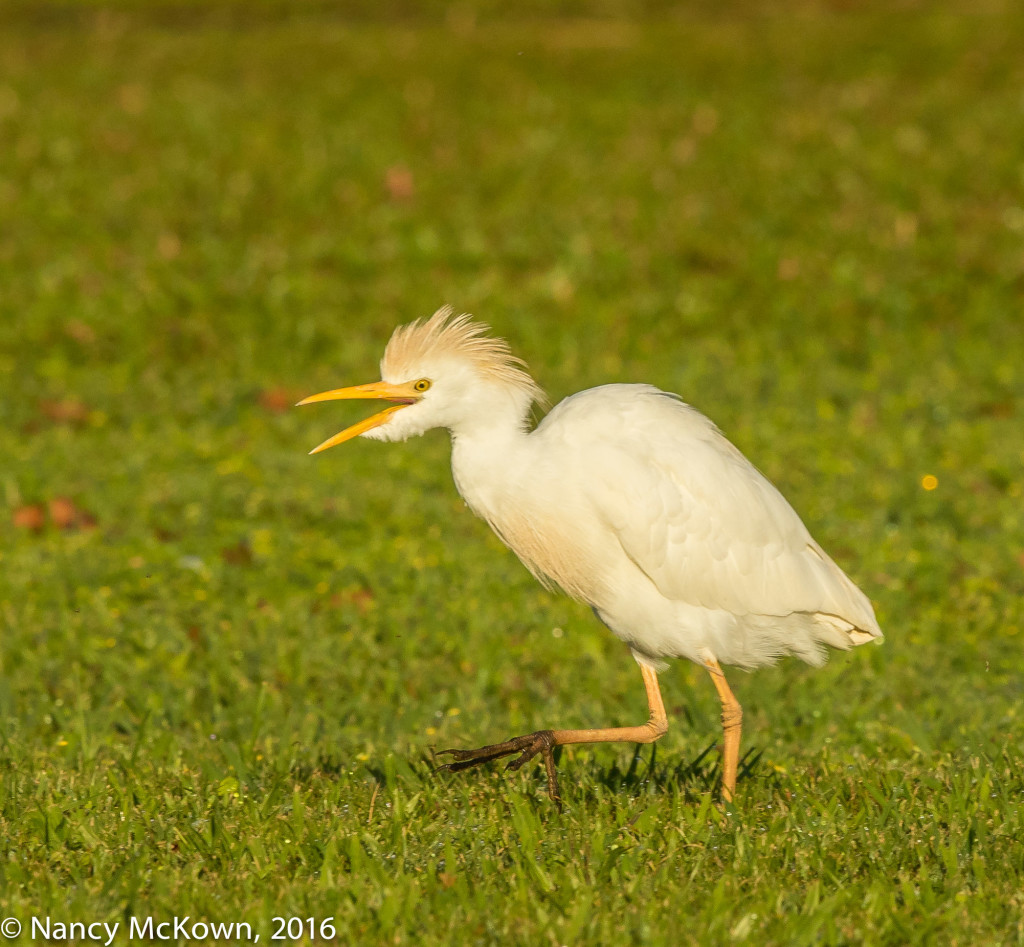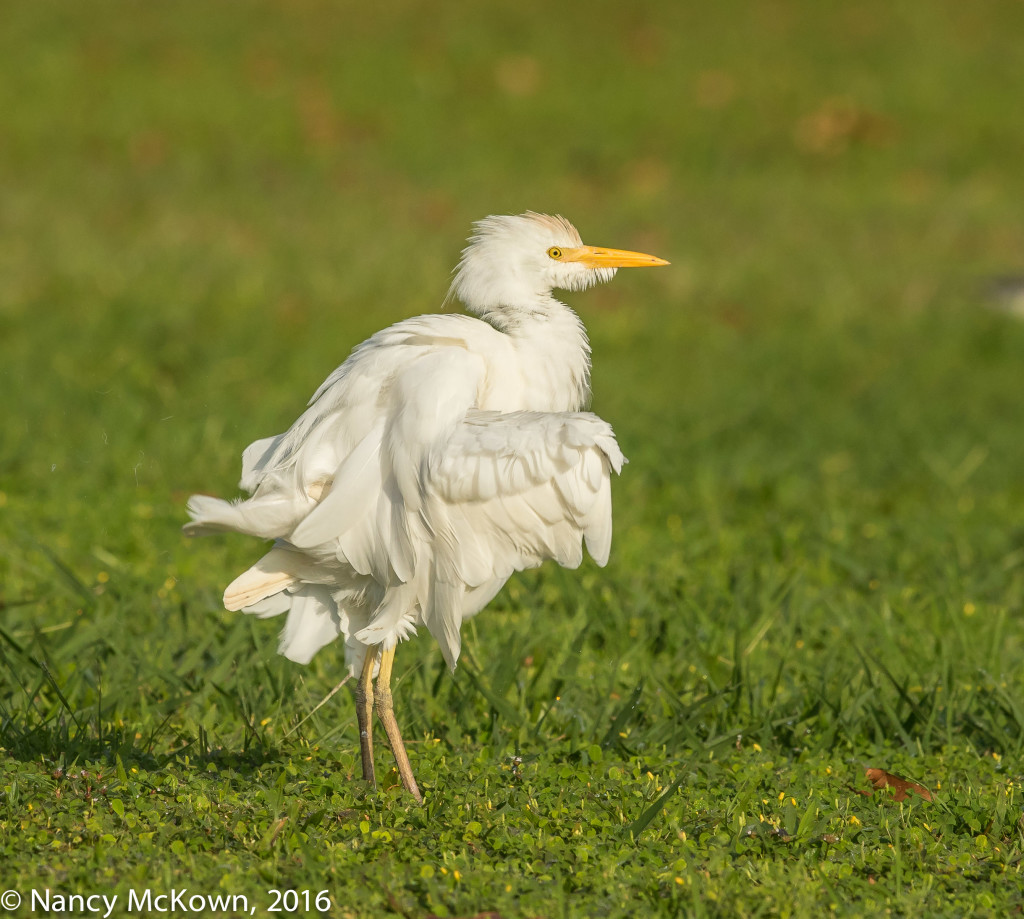Photographing Cattle Egrets
Cattle Egrets are tropical herons. These images were taken in March, 2016 in Hawaii on the garden island of Kauai where they are found on every golf course, roadside and back yard.
The Cattle Egret is one of the few herons that typically hunts for insects and invertebrates in open grassy areas, fields and marshes, especially where humans keep domesticated grazing livestock. They are often seen following anything big enough to stir up insects, like cattle and farm equipment. Somehow, they still manage to look elegant, even when following a tractor or riding atop a cud chewing cow.

ISO320; f/9; 1/1000 second
Proper Exposure of White Subjects
It was early morning and the foraging Cattle Egrets were cautiously keeping their distance from the camera. Just as well. The light meter was reporting a fairly balanced exposure from where I was standing.
When photographing white birds, I try to set exposure to bring out texture and detail in the plumage. During this shoot, the histogram showed lots of dark and light variation because of the wispy golden spring plumage (on the bird’s head, breast, and back), yellow legs, black feet and lots of vibrant green grass. There were no light pixels creeping up the right side of the histogram, indicating that details data in the birds’ feathers would be preserved. (NOTE: Keep those blinkies turned on.)
Canon’s Evaluative Mode
For this shoot, light meter was set to Evaluative Mode and due to the advantageous mix of light and color, exposure was spot on. It is true that modern day in-camera light meters are designed to work best when there’s “normal” and “average” light, but Canon’s Evaluative Mode has been engineered to be smarter than that. It does a fabulous job compensating for extremes in brightness (light and dark) because algorithms built into this metering mode selectively compare and evaluate the scene and give more weight to the active auto focus points. Spot metering would have allow me to take a meter reading right off the bird, but given so much diversity in the scene, it was not necessary.
With photo shoots like this, I rarely have to use exposure compensation (EV) options available to me unless backlighting is an issue, the white bird fills the frame, or a blanket of snow covers the scene.

Fluffing his Feathers.
ISO250; f/7.1; 1/1250 Second
Nailing Exposure of White Birds
I usually complain about being too far away from the wild birds I photograph. This is one of those times when benefited from NOT getting close to the subject.
The photos shown here are of white birds, but photographing them was not much of a challenge because there was plenty of color and light variety from which to measure accurate exposure. The REAL exposure challenge will come when I am lucky enough to be able to fill my viewfinder frame with a beautiful white feathered bird.








